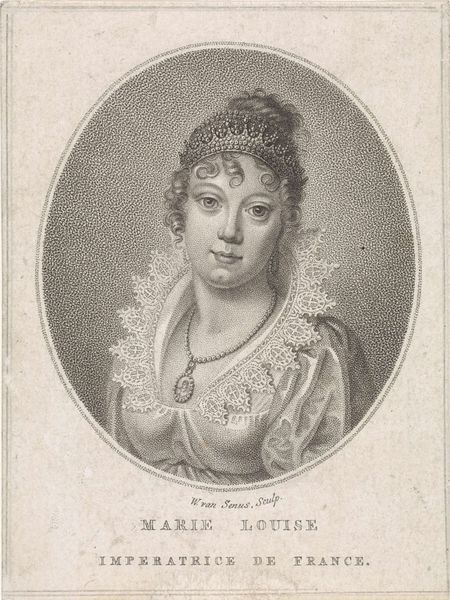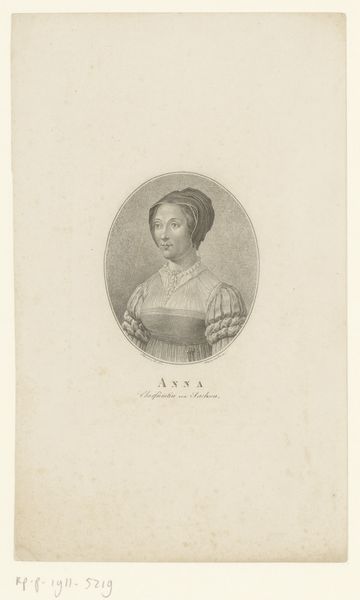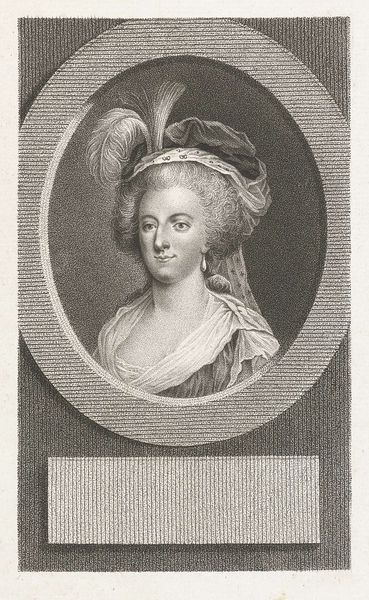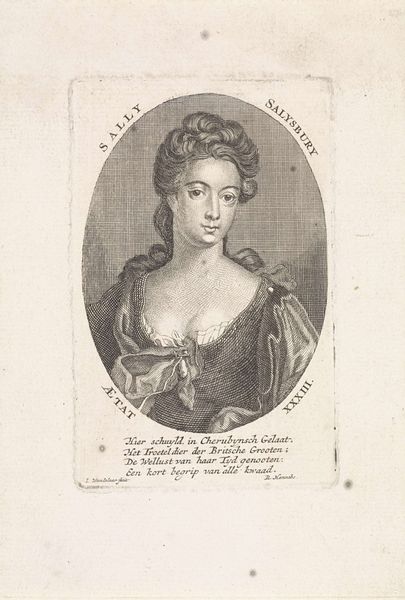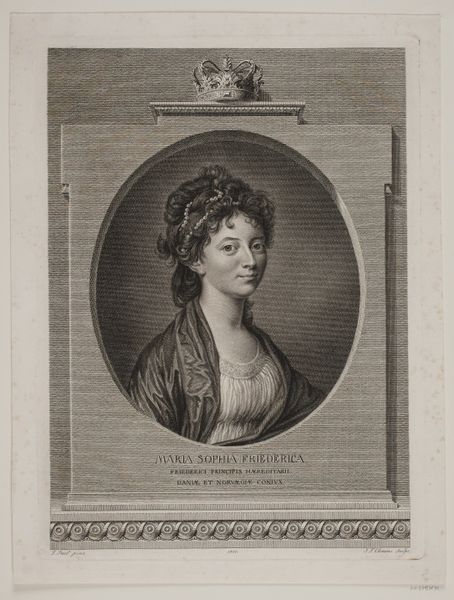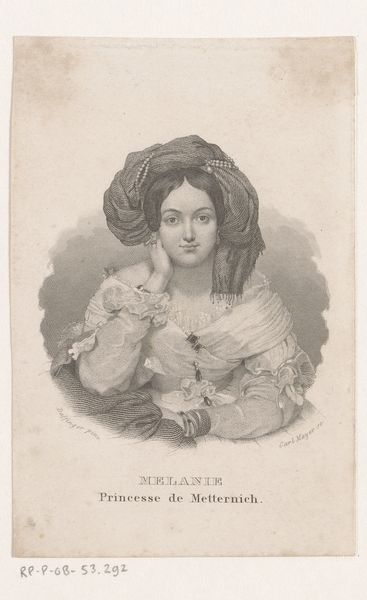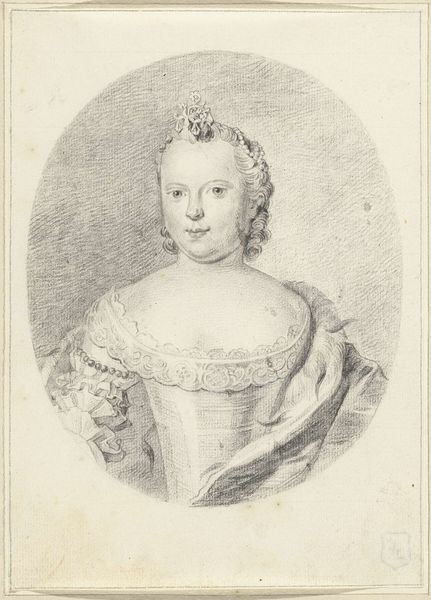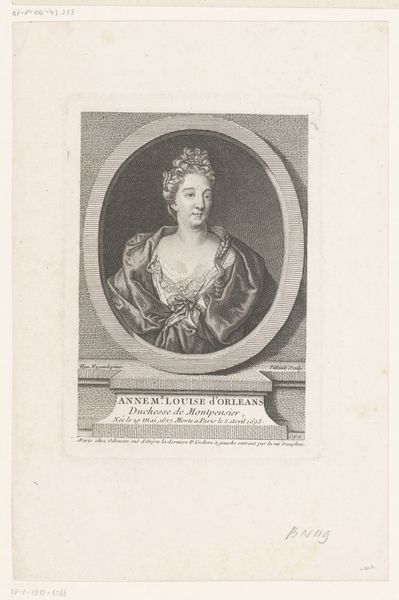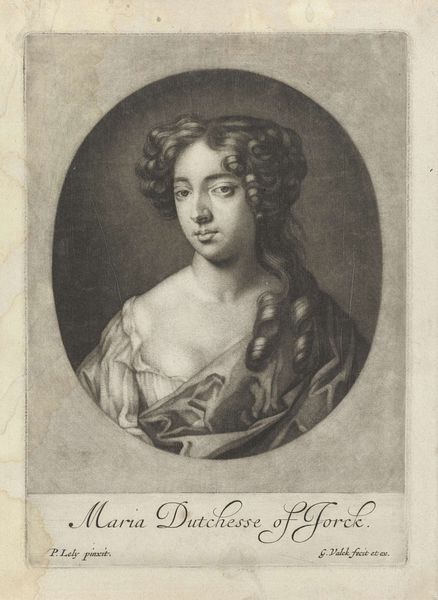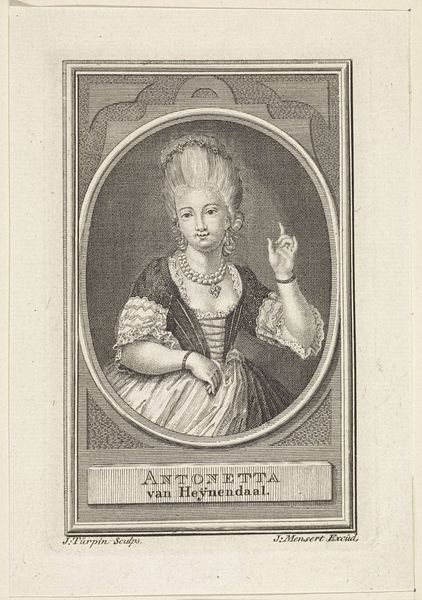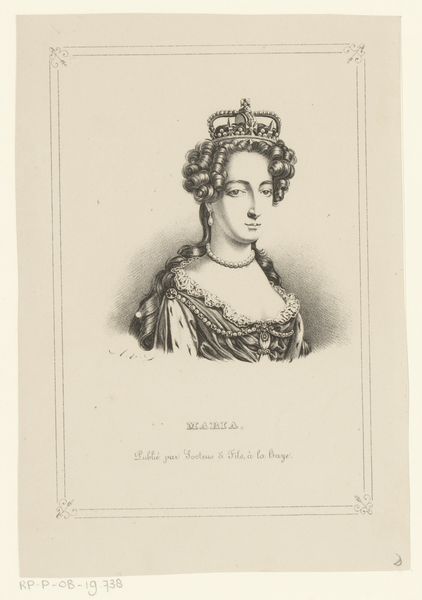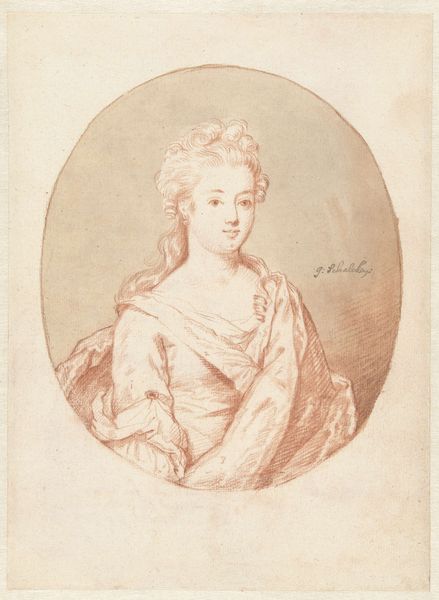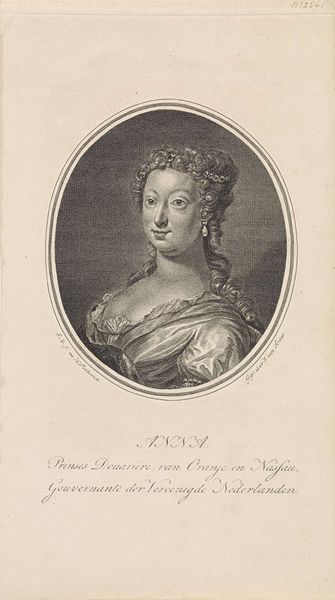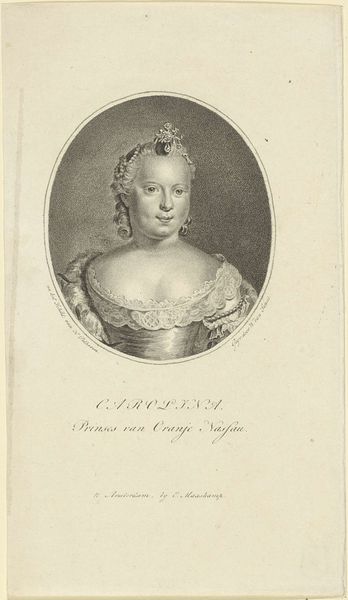
drawing, pencil
#
portrait
#
drawing
#
self-portrait
#
pencil drawing
#
pencil
Dimensions: height 177 mm, width 126 mm
Copyright: Rijks Museum: Open Domain
This print of Anna van Hannover was made by N.M. Schild, but its exact date is unknown. The image presents us with a particular vision of nobility, but what does it say about the social and cultural context in which it was produced? In portraits like these, visual codes and cultural references intersect. The delicate lines of the print, the subject's elaborate hairstyle, and the opulent dress all speak to a culture of aristocratic display. This was a time when portraiture played a crucial role in constructing and reinforcing social hierarchies. This image comes to us from the Dutch world, where the House of Orange-Nassau held significant political power. Understanding this image requires that we consider the role of patronage, the status of artists, and the evolving tastes of the European elite. Historians delve into letters, diaries, and account books to better grasp the social structures and institutional forces that shaped the making and viewing of art. Art, after all, doesn't exist in a vacuum. Its meaning is always contingent on its social and institutional context.
Comments
No comments
Be the first to comment and join the conversation on the ultimate creative platform.
